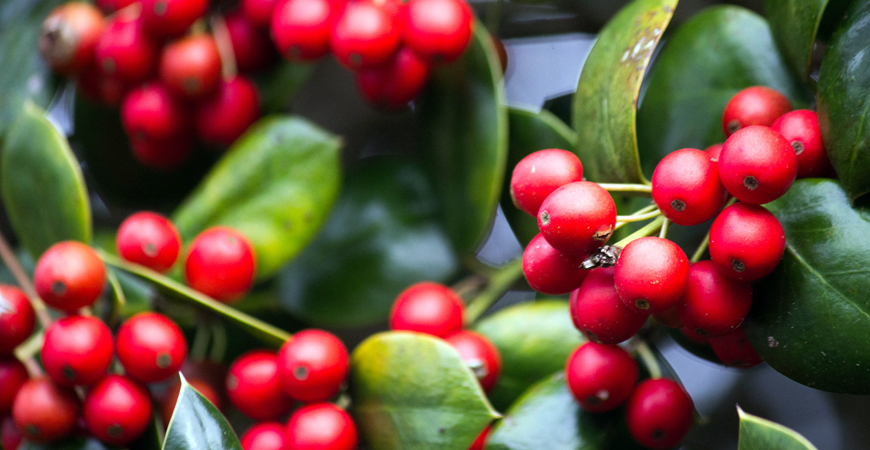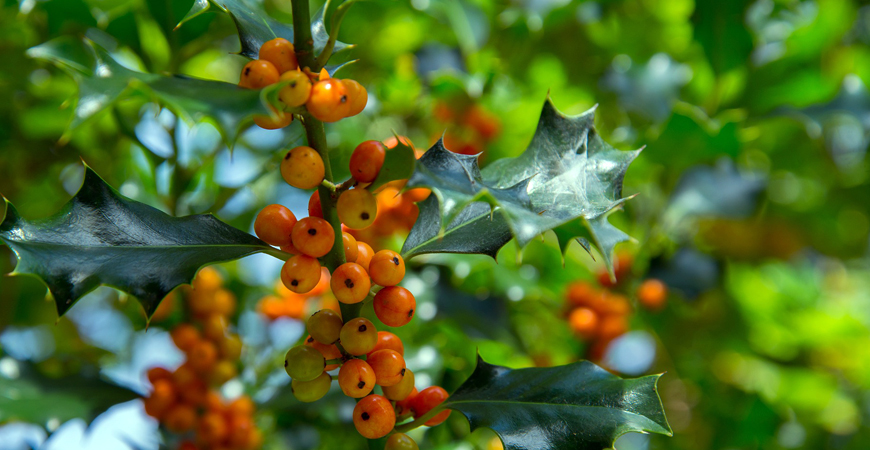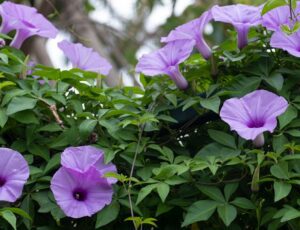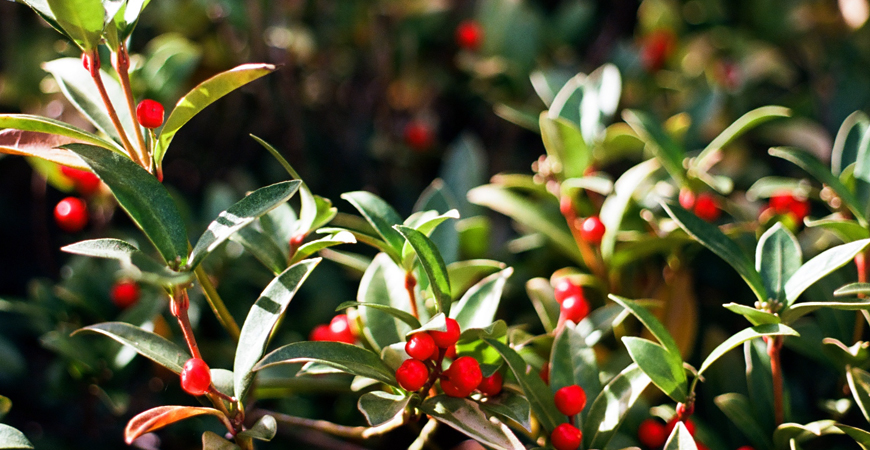
How to Grow and Care for a Holly Shrub
The deep green foliage and bright red berries of a holly shrub add beauty and year-round interest to any landscape. Not to mention, holly branch cuttings can be used around your home as holiday decor.
If you’re considering a holly shrub for your yard, then see our tips and how-tos.
What types of holly shrubs are available?
There are hundreds of holly varieties available. However, the best holly shrub to grow is usually one that is suitable for your planting zone.
Typically, these are available at your local nursery or garden center. Here’s an overview of four types that add beauty to a yard or landscape.
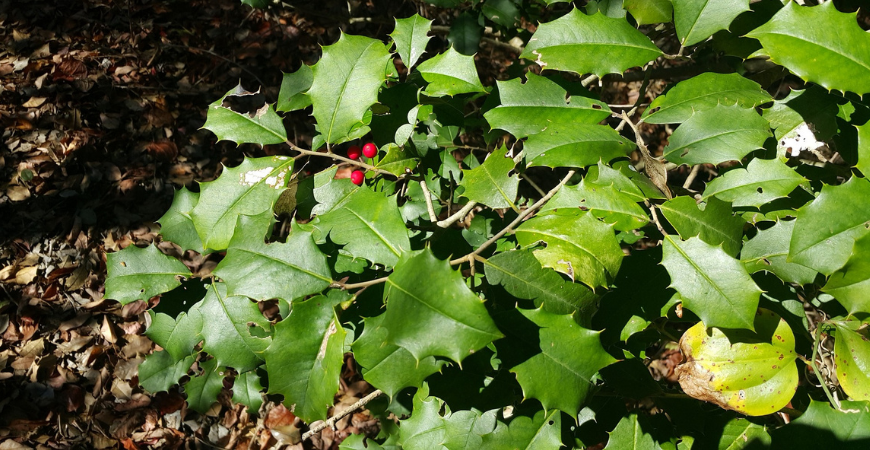
American Holly (Ilex Opaca):
This species of holly is the only native U.S. holly. American holly looks similar to English holly, except the leaves are more matte than glossy.
The spiny green leaves and bright red berries are good characteristics to look for. American holly makes for a great decor piece due to its deep green, berry-laden boughs.
When it comes to the planting conditions, American holly thrives in acidic and consistently moist soil. With that in mind, avoid planting in an area with wet or poorly drained soil.
It prefers a full-sun to a part-shade location in the landscape. If you live in a hot climate, then partial afternoon shade is best.
But, too much shade can cause a lack of foliage density. In addition, plant American holly in a location away from chilly breezes.
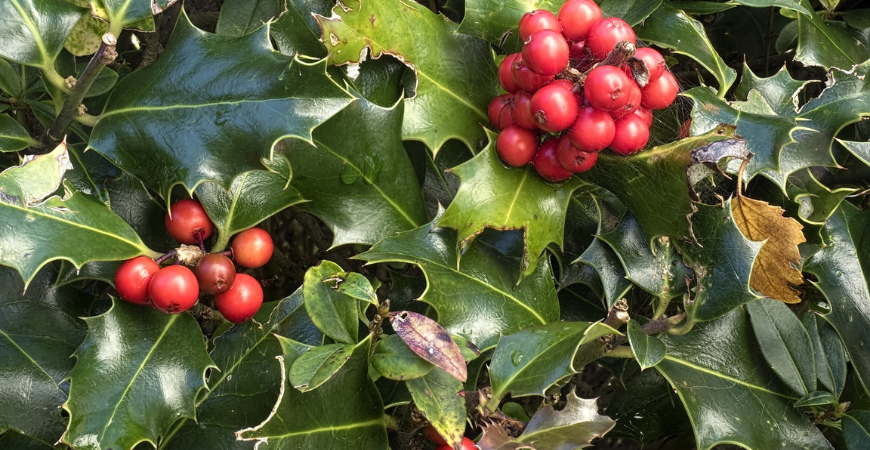
English Holly (Ilex Aquifolium):
When Christmas rolls around, if you begin to notice branches with red berries on them- those are usually English hollies. The glossy, spiny leaves and bright red berries make a cheerful display, whether that’s in the yard or on a dining table during the holidays.
One key difference between English and American holly is that English holly can not withstand cold temperatures. Whereas American hollies can withstand cold temperatures.
English holly prefers average, moist, and well-drained soil. So, plant English holly is a location that receives full sun to part shade.
However, if you experience hot summers, then plant English holly where it will receive afternoon shade. And keep them hidden from winter winds.
Due to their planting conditions, they can be challenging to grow in the heat and humidity of the deep south. It’s best to prune English holly in winter, which is the best time to use the cuttings for holiday decorating.
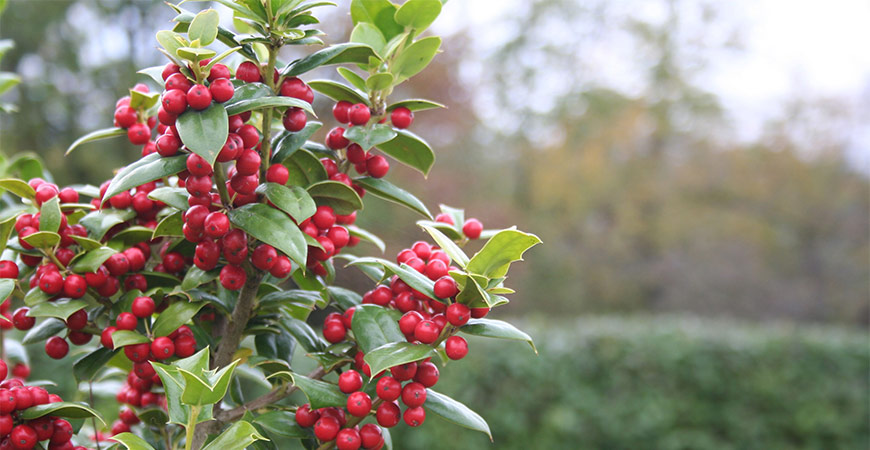
Chinese Holly (Ilex Cornuta):
Chinese holly or ilex cornuta is native to China and Korea. It is a broadleaf evergreen that grows to 8 to 10 feet in height. Moreover, the 4-inch long, rectangular leaves have three spines at the apex.
Furthermore, the small, white flowers become red berries, which ripen in fall. These characteristics allow them to provide beautiful colors in the winter landscape.
Chinese holly is winter hardy to planting zones 7 to 9. Additionally, it prefers an average, moist, and well-drained soil in a full-sun to a part-shade location.
However, if you live in a hot climate, then site your holly in a part afternoon shade area. And site the plant in a spot away from cold winter winds.
Notably, this species is a good choice for the deep south due to its heat and drought tolerance.
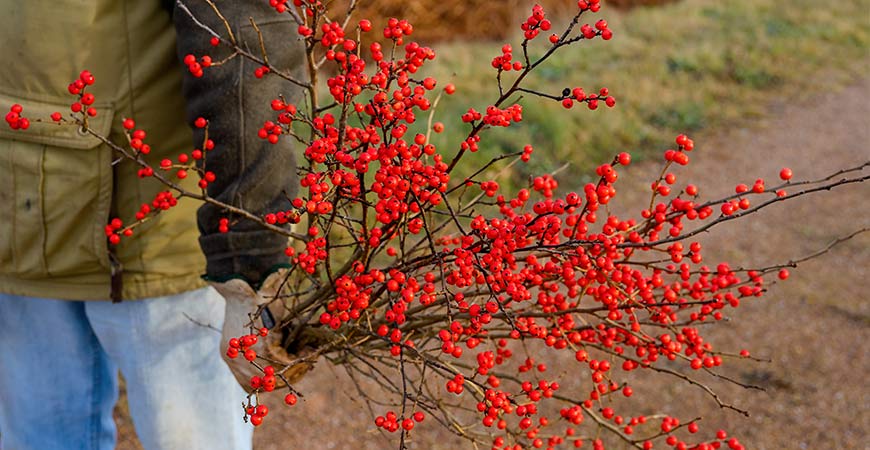
Deciduous Holly (Ilex Verticillata and Ilex Decidua):
These holly varieties drop their leaves in fall to display branches laden with bright red berries in winter. The berries are a favorite of birds.
There are two species of deciduous holly, ilex verticillata and ilex decidua- winterberry and possumhaw. Popular winterberry varieties include ‘Winter Red’, ‘Jim Dandy’, and ‘Southern Gentleman’.
‘Warren’s Red’ is also a popular variety of possumhaw.
How can I make sure my holly shrub has berries?
Holly shrubs come in male and female, so be sure to know the plant’s gender before you buy and grow it. If the gender of the holly plant is unknown, then ask the garden retailer.
Moreover, you may want to buy two hollies for your garden- male and female- to ensure your holly shrub will produce berries.
Home repair expert Danny Lipford mentions, “Hollies have male and female plants, with only the females producing berries. Female plants must be pollinated by a male hollies that bloom at the same time. Many cultivated varieties have male and female named counterparts, such as Blue Girl and Blue Boy.”
Can I grow a holly shrub in my planting zone?
Most holly shrubs are hardy to zones 5 or 6. However, there are a few varieties of hollies that can tolerate and grow with the cold winter temperatures of zone 4.
What time of year is best to plant a holly bush?
Plant hollies in spring just before the warm weather arrives. For a healthy plant, apply fertilizer twice a year, in spring and fall.
How tall and wide will my holly bush grow?
The height and width of a holly plant will depend on the plant variety. Holly shrubs range from one foot to 70 feet tall at maturity.
Choose a holly shrub that will fit your garden where it won’t grow too tall or wide.
How can I use live holly in my holiday decor?
Fresh cuttings from American holly shrubs and other varieties have brightened up the winter holidays for centuries.
Here’s how to make a table centerpiece with live holly sprigs:
What You’ll Need:
- Live holly leaves and berries
- Clear glass jars or vases
- Floating candles
- Water
- Place several short holly cuttings in a glass jar.
- Fill the jar with water to within 1-inch from the rim.
- Place a floating candle in the jar and light it.
- Make several jars and line them up down the length of a dining table.

Dress up a holiday napkin with holly, evergreen, and ribbon:
What You’ll Need:
- Holly sprig – 3 to 4 inches in length
- Pine sprig – 3 to 4 inches in length
- Decorative ribbon in a color of your choice
- Folded cloth napkin
- Scissors
- Cut a length of ribbon long enough to wrap around the napkin. Add extra length for a bow.
- Loosely wrap the ribbon around the middle of the napkin and tie it into a blow.
- Tuck a pine sprig (boxwood, fir, or other greenery are good alternatives) and a holly sprig under the bow.
- For a neat appearance, trim the ribbon ends at an angle.
Tip: If holly berries are your favorite, home repair expert Bob Vila, says “If you’re looking for mounds of red (or yellow or orange) berries and don’t care about the foliage, then the deciduous possumhaw holly is for you. This small tree grows well in the eastern half of the US and sports white flowers in spring.”

